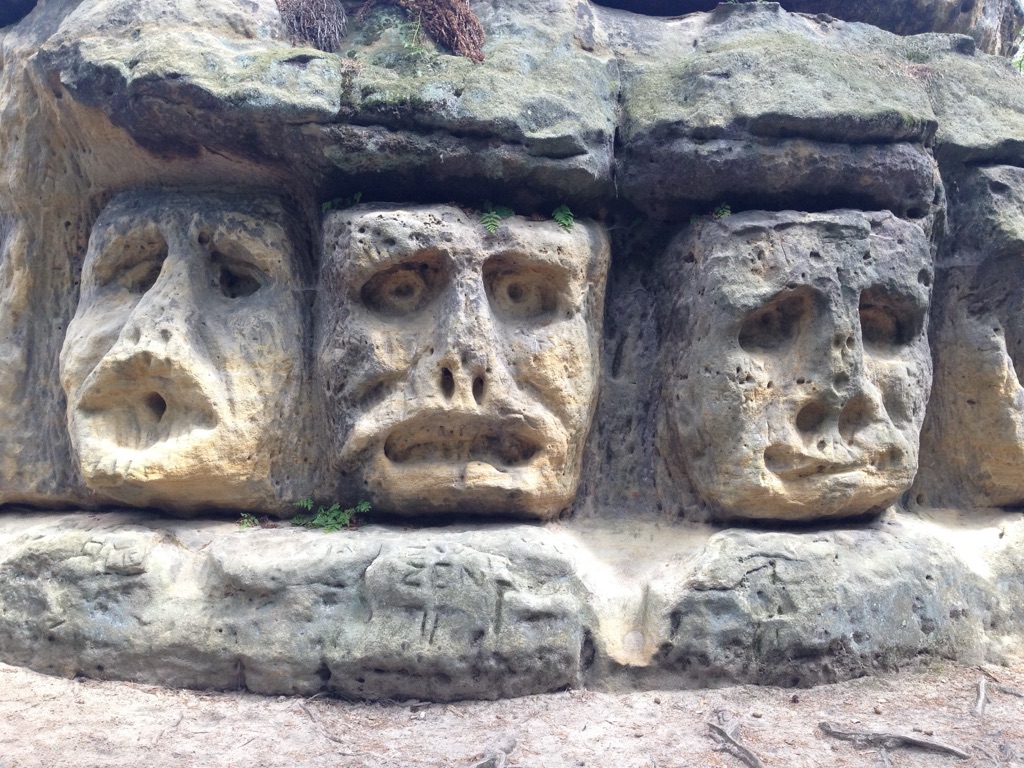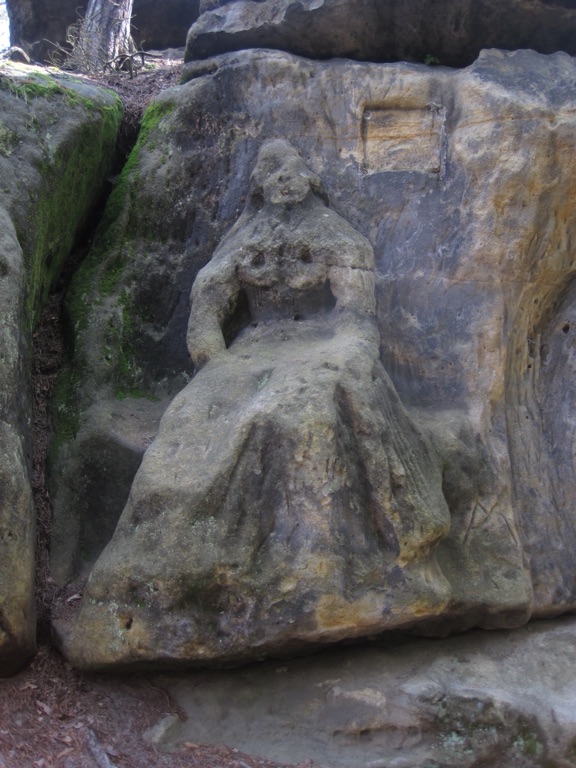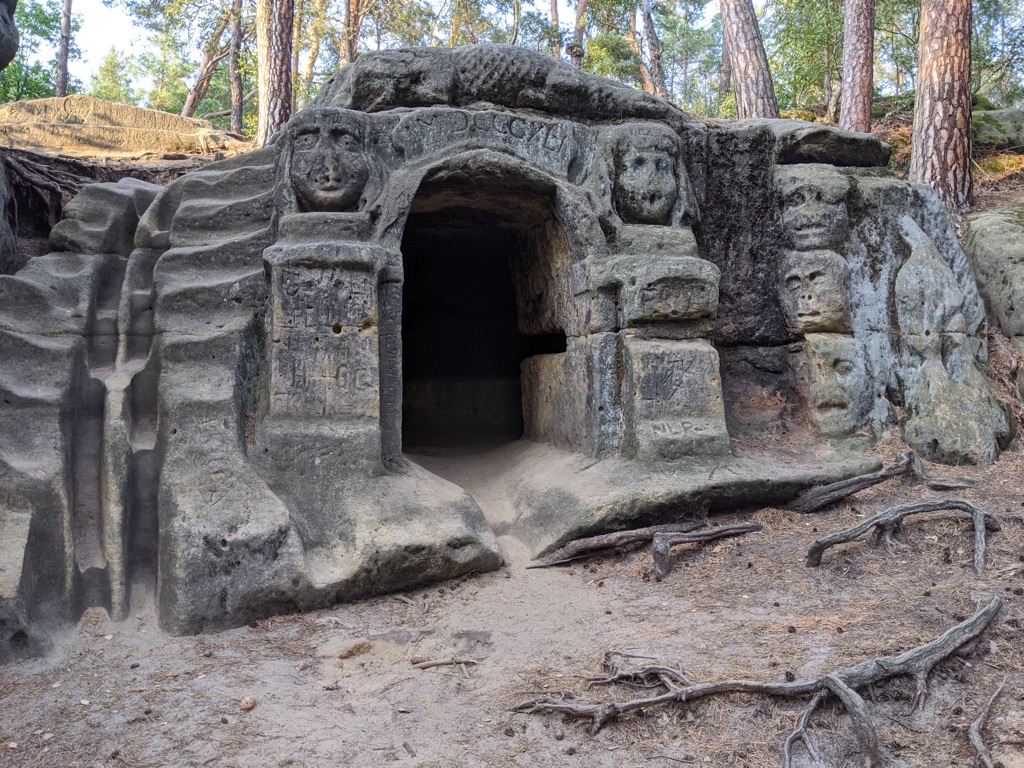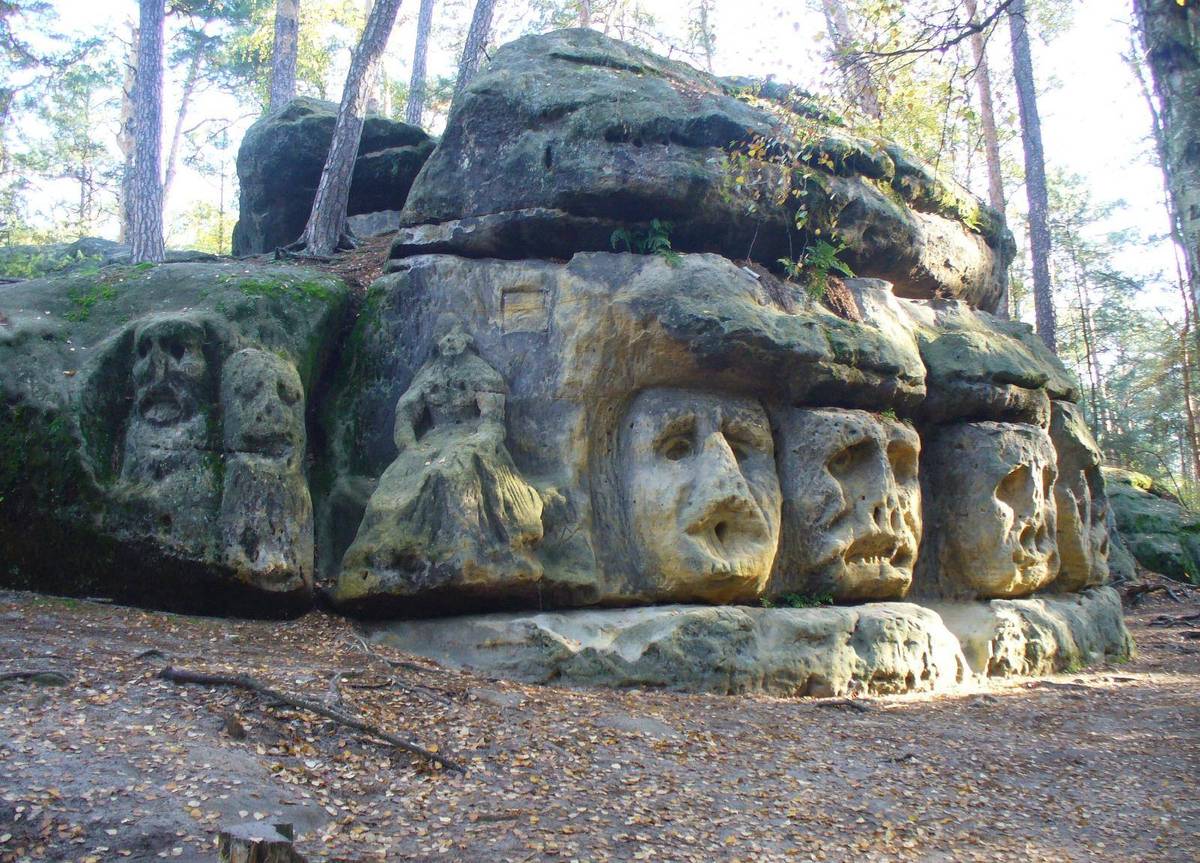The Harfenice Cave and the Artistic Legacy of Václav Levý
The Harfenice Cave, along with its surrounding sandstone sculptures, stands as a testament to the creative genius of Václav Levý, a sculptor whose work has left an indelible mark on the landscape near Želízy and Liběchov. This blog post delves into the history and significance of these sculptures, particularly focusing on the Harfenice Cave, and situates Levý’s work within the broader context of 19th-century European sculpture.
Get your dose of History via Email

The Genesis of Levý’s Sandstone Sculptures
Václav Levý, originally employed as a cook at the Liběch castle, discovered his passion for sculpting while exploring the sandstone rock formations near Želízy. Between 1841 and 1846, Levý embarked on a transformative journey, carving several romantic sculptures out of the soft sandstone, a material known for its malleability and suitability for detailed sculptural work. His patron, Anton Veith, recognizing Levý’s natural talent, supported him in pursuing this endeavor, allowing the cook-turned-sculptor to dedicate himself to his artistic pursuits.

The Harfenice Cave and Its Sculptural Ensemble
Among Levý’s creations, the Harfenice Cave, along with the serpent sculpture, stands out for its imaginative representation and the folklore surrounding it. The area, once known for its viper population, inspired Levý to carve a serpent into the sandstone, possibly as a tribute to the local snake population or simply as a reflection of the stone’s natural form suggesting a serpentine shape. The Harfenice, or the Serpent, alongside the U ješčera cave, showcases Levý’s ability to integrate his sculptures seamlessly with the natural landscape, creating a harmonious blend of art and nature.
The Devil’s Heads and Other Notable Works
Levý’s repertoire extends beyond the Harfenice Cave, including the monumental Devil’s Heads (Čertovy hlavy), which have captivated both locals and visitors with their imposing presence. Carved into the sandstone blocks, these sculptures, each about ten meters tall, were designed to evoke a sense of awe and wonder. Levý’s work on these sculptures, alongside other figures such as knights and historical heroes, demonstrates his versatility and deep connection to Czech folklore and history.

Legacy and Preservation
Václav Levý’s contributions to the field of sculpture were recognized during his lifetime, with his patron sending him to study in Prague and Munich, further honing his skills. Levý’s influence extended to his pupils, including V. Myslbek, and his works continue to be celebrated for their artistic and historical significance.
The preservation of Levý’s sculptures, including the Harfenice Cave and the Devil’s Heads, remains a priority for the local community and conservationists. Recent efforts to clear the surrounding pine forest have made these sculptures more accessible and visible, ensuring that Levý’s legacy endures for future generations to appreciate.
Conclusion
The Harfenice Cave and the surrounding sandstone sculptures by Václav Levý represent a unique fusion of natural beauty and artistic expression. Levý’s work not only contributes to our understanding of 19th-century European sculpture but also serves as a reminder of the transformative power of art to shape and enhance the natural landscape. As efforts continue to preserve these sculptures, Levý’s legacy as one of the most prominent sculptors of his time is further cemented, offering inspiration to both artists and admirers of art around the world.

